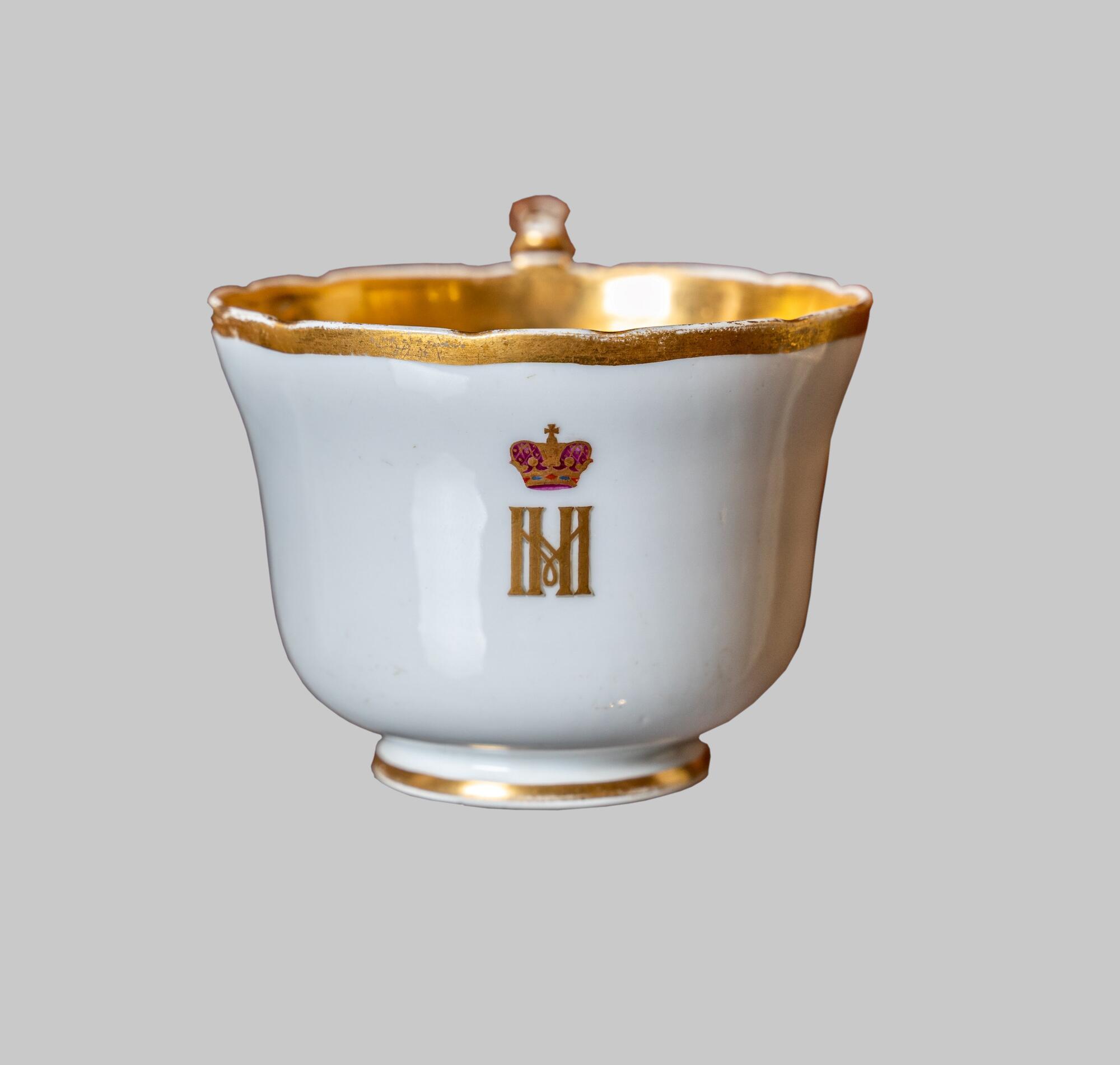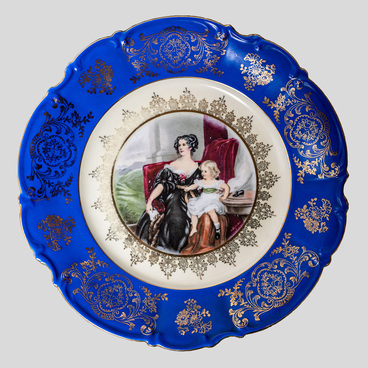The tea cup is made of white porcelain, the inner surface is gilded. Its lateral part contains an overglaze image of the cipher of Grand Duke Mikhail Nikolayevich - a stylized combination of the letters ‘M’ and ‘N’ made in gold under a purple-gold imperial crown. The handle is decorated with floral elements.
A hallmark in olive green is preserved under the glaze on the cup: the imperial crown, the stylized letter A, the Latin number II - all this is applied in three lines. The Great Imperial Crown is the hallmark of the Imperial Porcelain Factory. The letters and numbers under the crown designate the reigning emperor, that is the cup was made during the time of Alexander II. According to the donor, the cup was part of the china of Grand Duke Mikhail Nikolayevich, as evidenced by the cipher adorning its obverse.
Gliding was used already in the 8th century. The Lucca manuscript of the 8th century evidenced that. That collection of recipes described in detail the recipe for the preparation of polyment - the basis for gilding. Gliding was an integral part of the Slavic icon painting throughout its centuries-old existence.
The Imperial Porcelain Factory is located in St. Petersburg. It was founded in 1744 when Russian Empress Elizaveta Petrovna instructed foreign master ChristopherGunger who was invited and Dmitry Vinogradov who was assigned to him to invent a porcelain recipe and organize its manufacturing in the country.
The plant used a large number of hallmarks. Stamps made during the time of Alexander II were very similar in execution, which was caused by the use of stencils. Hallmarks in the form of an imperial monogram placed in a rounded wreath, a circle of stars or wavy lines belong to that period. That method was used to mark those porcelain products that were created in France and coloured in the Imperial Porcelain Factory.
A hallmark in olive green is preserved under the glaze on the cup: the imperial crown, the stylized letter A, the Latin number II - all this is applied in three lines. The Great Imperial Crown is the hallmark of the Imperial Porcelain Factory. The letters and numbers under the crown designate the reigning emperor, that is the cup was made during the time of Alexander II. According to the donor, the cup was part of the china of Grand Duke Mikhail Nikolayevich, as evidenced by the cipher adorning its obverse.
Gliding was used already in the 8th century. The Lucca manuscript of the 8th century evidenced that. That collection of recipes described in detail the recipe for the preparation of polyment - the basis for gilding. Gliding was an integral part of the Slavic icon painting throughout its centuries-old existence.
The Imperial Porcelain Factory is located in St. Petersburg. It was founded in 1744 when Russian Empress Elizaveta Petrovna instructed foreign master ChristopherGunger who was invited and Dmitry Vinogradov who was assigned to him to invent a porcelain recipe and organize its manufacturing in the country.
Initially, the production was called ‘Neva Porcelain Manufactory’, from 1765 - the Imperial Porcelain Factory, from 1917 - the State Porcelain Factory. In 1925, because of the 200th anniversary of the founding of the Russian Academy of Sciences, it was named after Mikhail Lomonosov. At the same time, the enterprise received a new official name - the Lomonosov Leningrad Porcelain Factory.
The plant used a large number of hallmarks. Stamps made during the time of Alexander II were very similar in execution, which was caused by the use of stencils. Hallmarks in the form of an imperial monogram placed in a rounded wreath, a circle of stars or wavy lines belong to that period. That method was used to mark those porcelain products that were created in France and coloured in the Imperial Porcelain Factory.



